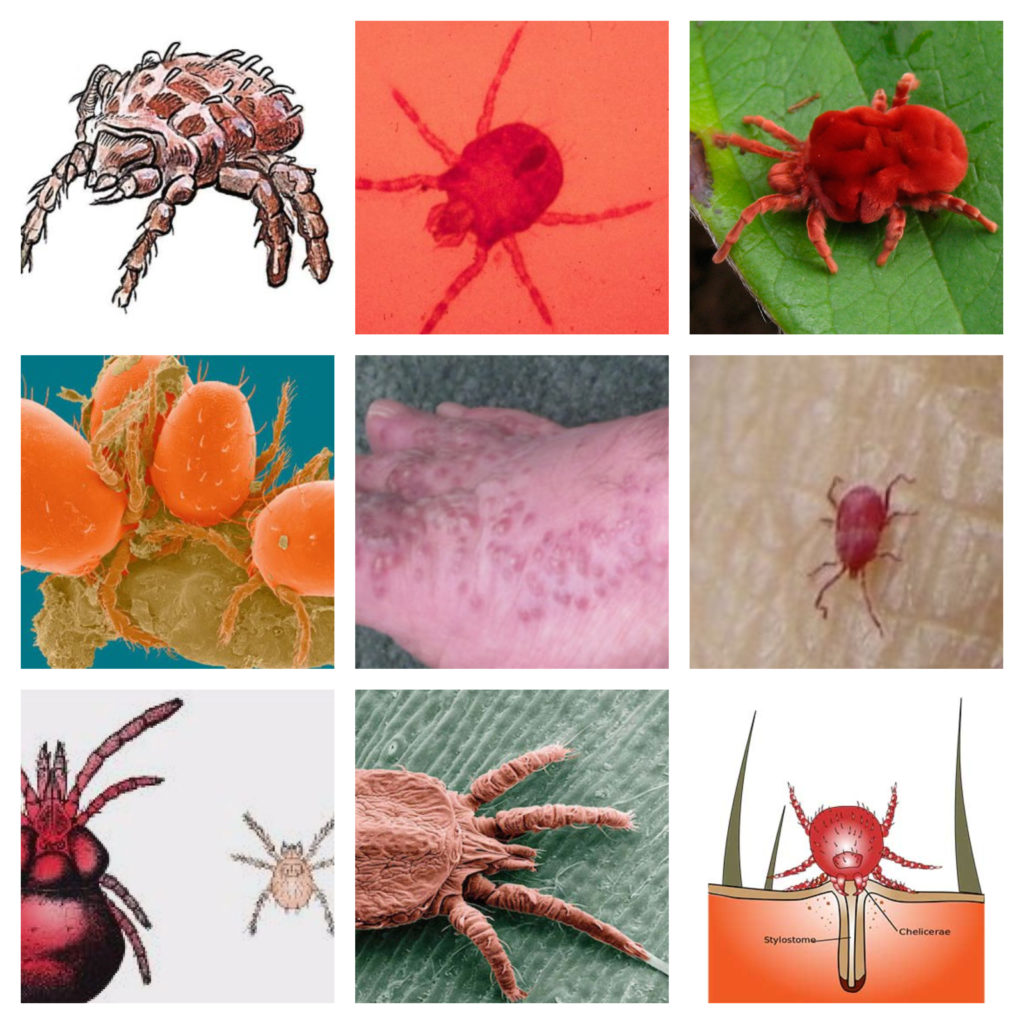The warm summer’s air energized me as I fled through the tall Johnson grass. Would he catch me or could I make it back to base? At first, I would crawl, but if seen, I would stand proudly only to run at full speed as my heart began to beat like the over tuned oil pumps just west of Midland, Texas. At age ten, our version of hide-and-seek featured the tag requirement- we had to actually touch them before they made it back to the starting point. The game itself was fun and featured that small element of danger. Nonetheless, it wasn’t the physical portion, the Texas heat itself or even the excitement that eventually took us down…it was the chiggers!
Scientists classify these little tick-like arachnids as “trombiculid mites” but they were originally parasites on bats. Eventually, these almost invisible red demons migrated to their current habitat of brush, pine straw, Spanish moss, weeds and especially tall grasses. They feature an odd orange, light red hue, are completely covered in hairs, move relatively quickly and are nearly microscopic and measure about 0.4 mm (1/60 of an inch) in the parasitic, larvae form. Some say they are most active during warm afternoons in spring, summer and early fall when ground temperature is from 77 and 86 and die off when it’s colder than 42 degrees. These parasitic creatures are heavily concentrated throughout the entire Southland and moderately in a few portions of the Midwest.
It’s actually an old wives tales that they burrow under the skin or suck blood like the age old vampire. The truth is actually much worse. After these little spiders hatch from eggs, the babies don’t travel very far, they stay clumped together in large clusters to attach themselves as a group onto their unsuspecting victims. After the chiggers latch onto your shirt, shoes or pants, they crawl around until they discover skin. Once in place, their sharp, jaw-like claws make tiny holes where it injects a digestive enzyme directly into your flesh. This poison causes the skin cells to rupture and morph into a liquid. The saliva then slowly dissolves a hole which forms a hardened, straw-like tube called a “stylostome.” It’s through this straw that the chigger drinks your dissolved, liquefied human tissue. The longer a chigger is attached, the deeper its saliva will penetrate. This parasite will likely remain stuck to you for days as they literally feast on your liquified human flesh.
It’s not uncommon for an unfortunate victim to be covered by hundreds of chiggers. In fact, one hapless casualty in a group can get completely coated with chiggers while no one else receives even a single bite. Those bites most often show up in clusters around the waist or lower legs. At first you might not notice anything wrong but two or three hours later you’ll start to itch. A fierce itching emerges which lasts for days to keep you up all night. Next, your skin turns red with bumps, blisters and a hive-like rash that may take weeks to heal. Men who get bitten near the groin often develop “summer penile syndrome,” a condition which causes itching, swelling and can painfully prevent urination for weeks.
Once infected, how can you get rid of the chiggers? According to an Ohio State University Extension Fact Sheet:
“After returning from a chigger-infested area, launder the field clothes in soapy, hot water (125°F.) ….As soon as possible, take a good hot bath or shower and soap repeatedly. The chiggers may be dislodged, but you will still have the stylostomes, causing the severe itch. Scratching deep to remove stylostomes can cause secondary infections. For temporary relief of itching, apply ointments of benzocaine, hydrocortisone, calamine lotion, New Skin, After Bite, or others recommended by your pharmacist or medical doctor (The sooner the treatment, the better).”
What is the best way to completely prevent being tagged as an unwilling host to this nasty spider mite, the chigger? Well, this little arachnid is actually one of the least dangerous of the multitudes of parasitic and/or poisonous creatures living throughout the temperate environment of the Southland- and just one more unfortunate peculiarity for Yankees and foreigners to consider before moving to Dixie.
-By Rex Stetson

“Ten minutes exposure, tops. And for most of that time, I was on pavement.”, chigger host.

O I’m a good old rebel, now that’s just what I am. For this “fair land of freedom” I do not care at all. I’m glad I fit against it, I only wish we’d won, And I don’t want no pardon for anything I done.






Brilliant! We ought to start a media campaign over-emphasizing the danger of these little pests to the good health and comfort of Yankee interlopers in particular, and plaster the little “infomercials” all over Yankeedom in all forms of media.
“Considering moving to the South or her western territories to escape the inhuman conditions you have helped to shape in your own native state(s)? Have you considered the plague of chiggers indigenous to these regions that await your arrival here? Think again, Billy Yank!”
Btw, the terms “Yankee” and “foreigner” are different terms signifying the same thing, no?
I often say, “Yankees and other immigrants “.
Absolutely and thank you T.Morris!
By the way, many if not most of the readers of Identity Dixie are in their 20’s, some of whom were raised without an ethnic identity or even an intact family who seek direction. Meanwhile, I know you raised quite a number of children. You might consider writing (under a pseudonym) a few family-oriented articles to help guide young folks about the importance of having a large family. Of course, I say “under a pseudonym” only because we are at the point in the USA that we no longer have the basic freedom even to write pro-Christian, pro-family articles without severe real world retributions- death threats to elderly parents, loss of employment, etc…
chiggers must not like me cause ive never been bit by one despitethe people around me being ate up with them. strange.
same way with poison ivy.
Despite a lifetime of awareness and caution, this Summer I made a rash decision to get off the trail for two minutes to do my business. Two hours later the result became evident. I had over 60 bites on both legs from my ankles to my groin (fortunately no higher). Due to my sensitivity to bites, in general, I paid the price for over three weeks. Three months later the red remembrances are still a visible reminder of my foolishness…